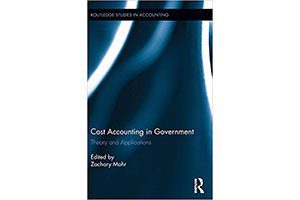Dr. Zach Mohr’s book

Who would pay $400 for a hammer or $800 for a coffee pot? You probably wouldn’t, but people often bring up these cases as examples of the federal government wasting taxpayer money. Despite the media reports on these outrageous items, the reality is that government does not actually pay that much for hammers or coffee pots.
The $400 hammer or $800 coffee pot is a difficult problem for government financial management, though. Beyond simply the political sensitivity of the purchases, the bigger problem is cost accounting and how it is done to calculate the direct and indirect cost of the service or object. For example, the case of the hammer was an actual situation and a large amount of engineering costs for the development of a larger weapons system were allocated down to the relatively limited amount of direct costs, which gave the appearance of fraud, waste, and abuse. Given these past scandals with cost accounting, a reasonable person may ask whether cost accounting is worth the trouble? The surprising answer is that it is worth it to government.
Tracing the theory and history of cost accounting in government, the book then goes on to explore contemporary applications of cost accounting. For example, governments rely on cost accounting for setting reasonable rates and fees for services. Other applications include documenting appropriate and reasonable costs for overhead on grants and contracts, and cost accounting can be used extensively with performance management. This edited book has chapters written by both national and international experts on the use of cost accounting in government. It concludes with a chapter on the future of cost accounting research and practice. Written primarily for government budget and finance experts, the book also has applications for those that study cost accounting and government financial management.